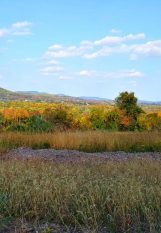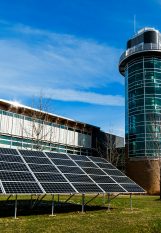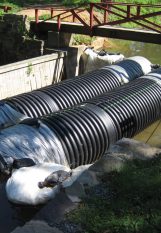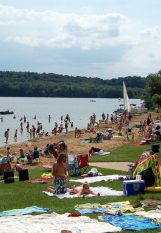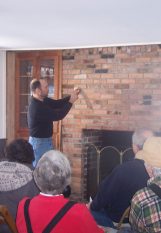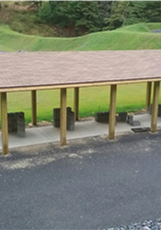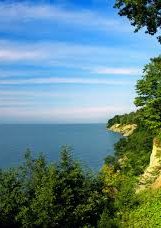But the true wonder of the new Big Woods Trail is its accessibility. Designed to expand recreational activities to more people, this trail is hard-paved at a 5% slope. Unlike the rocky and muddy trails throughout the area, this trail is wheel-friendly and opens up hikes to wheelchairs, strollers, and other tools of limited mobility. As an educator, this enables me to bring more people out into the field for interpretive walks and lessons, which thrills me.
Journey Towards Sustainability
One of the unforeseen benefits with this project is how it has engaged the staff in making energy consumption reductions throughout the building. The staff started calculating the energy demands of specific areas of the building and started targeting energy-efficient lighting upgrades to those areas. This story was publicized in the local news and the park was contacted by a local electrical retailer who wanted to get involved in our efforts to reduce consumption in the building. As it turned out in the end, the local retailer donated another $20,000 in LED lighting upgrades to the building, which will not only lower our total electrical needs over time, but ultimately reduce man-hours in maintenance with the longer lifespan of new LED bulbs.
Fixing a Canal
The aqueduct structure failed in April 2016 and we currently have two 50-inch diameter plastic corrugated pipes with coffer dams on both ends over the aqueduct to allow us to bypass water over the structure. Without the bypass, we would not be able to water the canal from the Raubsville area down to Centre Bridge. This aqueduct is crucial to canal operations, because it allows us to send water through the canal for approximately 24 miles down to Centre Bridge. With the temporary bypass in place we can still send water south, but only at approximately half of what our normal flow would be.
Necessary Improvements
While this project will not offer a bright, shiny new amenity for our park visitors to see and appreciate, it is crucial to maintaining a water production and distribution system that does allow for our visitors to use comfort facilities, fill their bottles at a water fountain, or take a shower at one of our modern cabins. This project will improve part of the skeleton of the park that supports so many of the other amenities, and this will be accomplished through Keystone funding.
Preserving a Historic Home
The 405-acre park had been the Wheaton family farm from the late 1830s until it was sold to the state in the early 1970s. One of the remaining farm buildings is the Wheaton House, the family home built in the early 1840s. By the 1990s it needed significant structural work to become a usable public space, and the Keystone Fund grant allowed us to begin the work.
Passing On a Legacy
The state-of-the-art facility supports one of the largest regions of hunters, plus law enforcement and shooting competitors from Pennsylvania and other states. It is also available for campers and other visitors to the state forest. The area has a strong hunting and target shooting history, as well as a legacy of training future generations on proper gun handling and respect for the outdoors. The range provides an important space for this training.
Nature as It Should Be
So today, 11 years after Erie Bluffs became a state park, I’m reminded often that our efforts were well worth it. We see more and more activity as people find out about the park, and the most common question is “what is DCNR going to do with the park?” My answer is usually “nothing,” and it usually is well-received. It seems most people are fine with no formal trails, signage, or pavilions. They enjoy the natural surroundings and the freedom to explore and take in nature as it should be.
